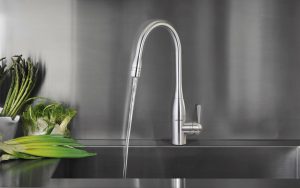Where do they get those wonderful toys?
 Whether you’re planning your own kitchen renovation or just pinning cool stuff to your “someday” wish board, Teakwood Builders’ kitchen designer Eva Andersen shares the top technological wonders her clients are putting in their dream kitchens.
Whether you’re planning your own kitchen renovation or just pinning cool stuff to your “someday” wish board, Teakwood Builders’ kitchen designer Eva Andersen shares the top technological wonders her clients are putting in their dream kitchens.
Lenova Aqualogic Ozone Faucet
What if you could sanitize your cutting boards and dishes without hot water or chemicals? What if you could do the same thing to your salad greens, eliminating one of the most common sources of E.coli contamination in the supermarket?
The water that comes out of a Lenova Aqualogic Ozone Faucet actually kills bacteria.
The faucet contains a thin generator that “ozonizes” tap water. Ozonized water kills bacteria 3,100 times faster than chlorine bleach, and it doesn’t even have to be hot. Garlic odor and germs wash off hands in cold water without soap.
“It’s so cool,’” enthused Andersen. “I saw a demonstration in which they held a sliced apple under the ozonized water and then left it out for two hours, and it didn’t turn brown because the water had taken away the bacteria.”
The faucets run $700 to $1,500, and the styles available are straight-forward stainless steel goosenecks or pullouts.
“We’re kind of at the point with some technologies where you either pick something that does amazing things or you pick what looks good to you. You can’t always have both form and function yet,” Andersen said.
The Galley Ideal Workstation
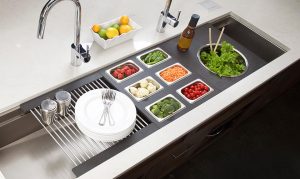 “Swoon,” sighs Andersen. The Galley isn’t simply a sink – it’s a game changer. Since almost every party ends up in the kitchen anyway, why not tailor your sink to be the ultimate, highly functional workstation for prep, cooking, entertaining and clean-up? As on a ship, not an inch is wasted, everything has a place and you can reach it all and hold court without weaving and bobbing around your guests.
“Swoon,” sighs Andersen. The Galley isn’t simply a sink – it’s a game changer. Since almost every party ends up in the kitchen anyway, why not tailor your sink to be the ultimate, highly functional workstation for prep, cooking, entertaining and clean-up? As on a ship, not an inch is wasted, everything has a place and you can reach it all and hold court without weaving and bobbing around your guests.
Galley Ideal Workstations are highly engineered to work beautifully. You choose the size and style based on your cooking and entertaining patterns: team cooking or solo artists; one, two or three sink bays; tight quarters or wide open spaces, even indoor or out on the patio. The Culinary Kits – which range from cutting boards, knife blocks and drying racks to wash and serve basins – can be finished in natural bamboo, gray or white resin or a graphite wood composite.
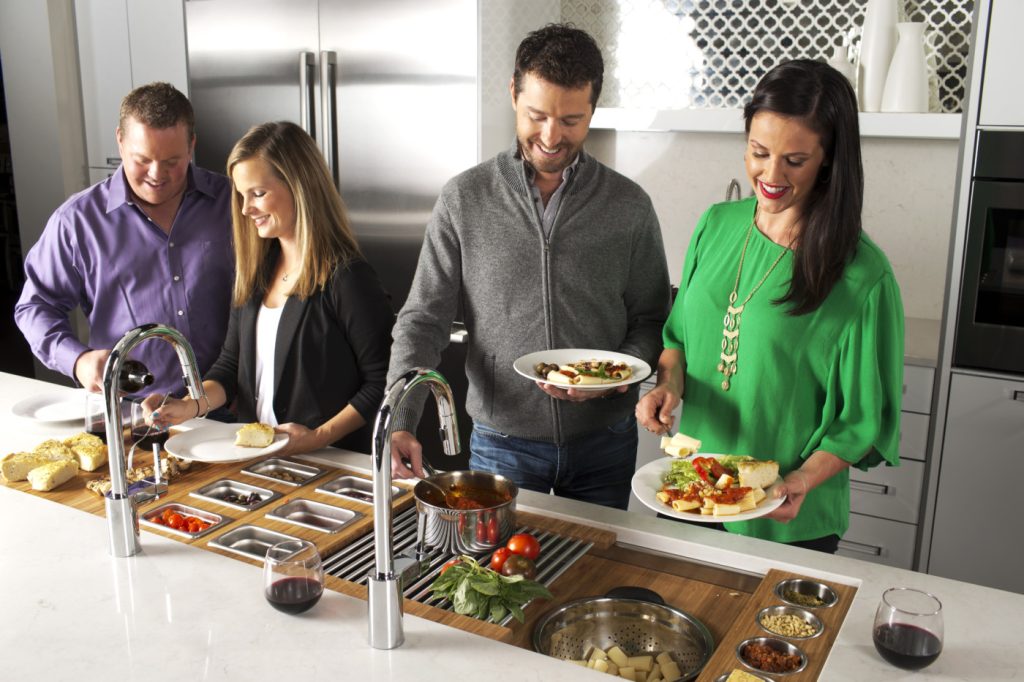
Accessories can be tiered, so that a condiment and garnish board on the upper tier can slide back to reveal a colander below. When not in use, the bays can be covered to make a tidy flat surface. Prices range from $2,200 to $7,000, depending on the size and features you choose.
Grow Stations
Andersen has become a huge fan of an appliance that puts a fully automated hydroponic garden in the kitchen.

“It’s basically like an undercounter beverage refrigerator,” Andersen said. “They are 24 inches wide and allow you to grow herbs and microgreens year round in any climate.”
The glass-fronted units, produced by Urban Cultivator, have computerized grow cycle lighting and humidity, and can be plumbed to provide automatic watering seven days a week. All the user has to do is add organic fertilizer once a week and eat the sprouts.
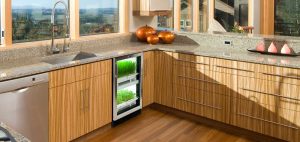
The mini gardens use about 18kWh per month, about the same as a wine cooler of the same size. Price? About $2,600-$3,000.
Want some tips for some indoor vegetable gardening? The Loyal Gardner has put together a comprehensive list about indoor gardening.
Computerized Wine Dispenser
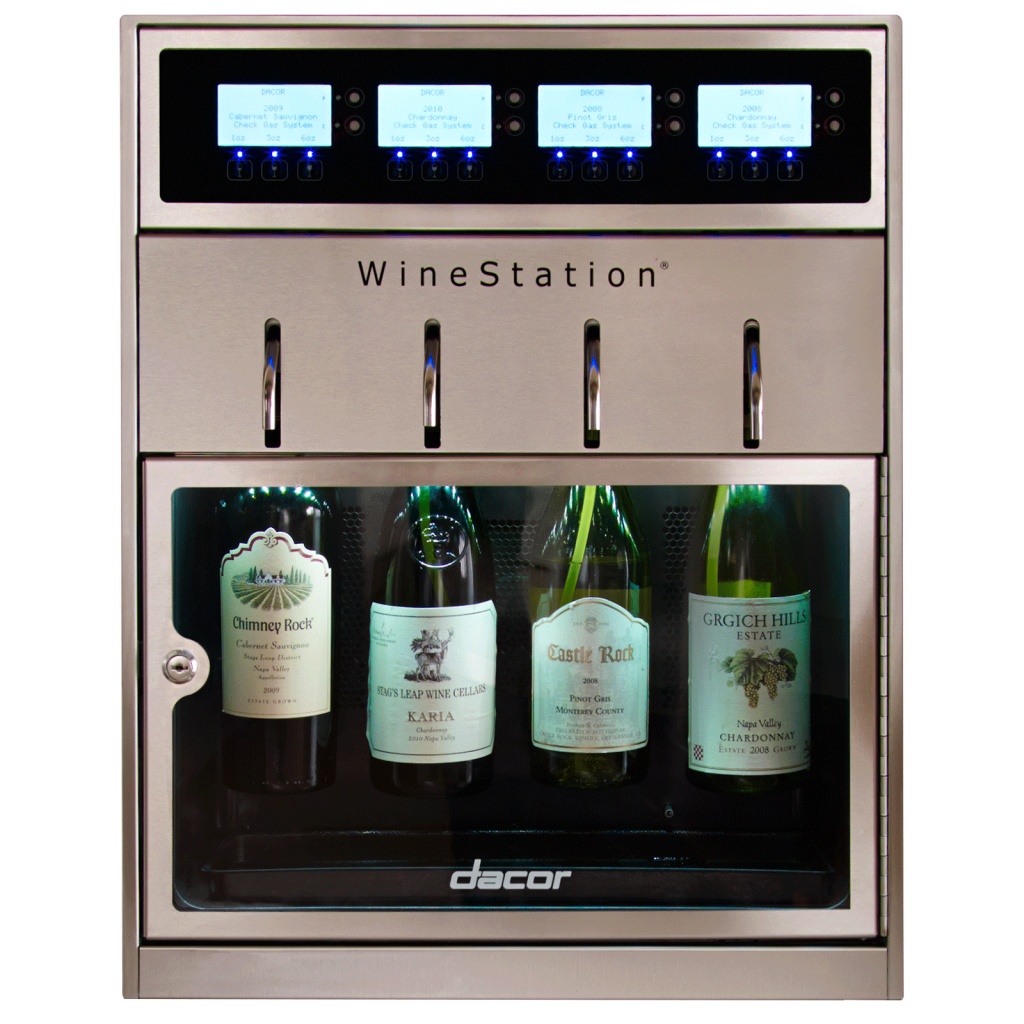 You’ve seen them in fancy wine bars, now you can have one of your very own. Dacor’s Discovery WineStation® is the first automated, temperature-controlled, four-bottle wine dispensing and preservation system for the home.
You’ve seen them in fancy wine bars, now you can have one of your very own. Dacor’s Discovery WineStation® is the first automated, temperature-controlled, four-bottle wine dispensing and preservation system for the home.
“For the wine connoisseur and collector, no custom bar or kitchen is complete without a wine station,” Andersen said.
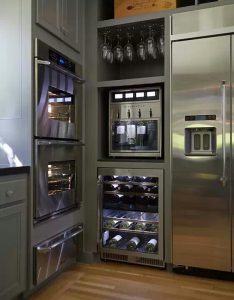
A parental control locking door prevents children and strangers from pouring wine or removing bottles when the WineStation is left unattended.
The programmable display allows you to show the wine type, wine year and varietal of each bottle. The unit plugs in to a normal household outlet and doesn’t need to be plumbed.
A four-bottle dispensing system runs about $5,700.
In-Cabinet LEDs
Hate having to turn on all the kitchen lights just to find a spoon? What if your teacups and cereal boxes had their own well-placed smart lights that turn on only when you open the drawer or pantry door?

“This is becoming more and more standard,” Andersen said. “At first people think, ‘I don’t need lights in my drawers.’ And then they see it in person and realize how impressive and handy it is.”
The LEDs are motion sensitive, so they only come on when you need them, an energy-efficient trait whether you choose to hard wire them or run them off batteries. Cost varies widely depending on the style and quantity of lights.
Docking Drawers
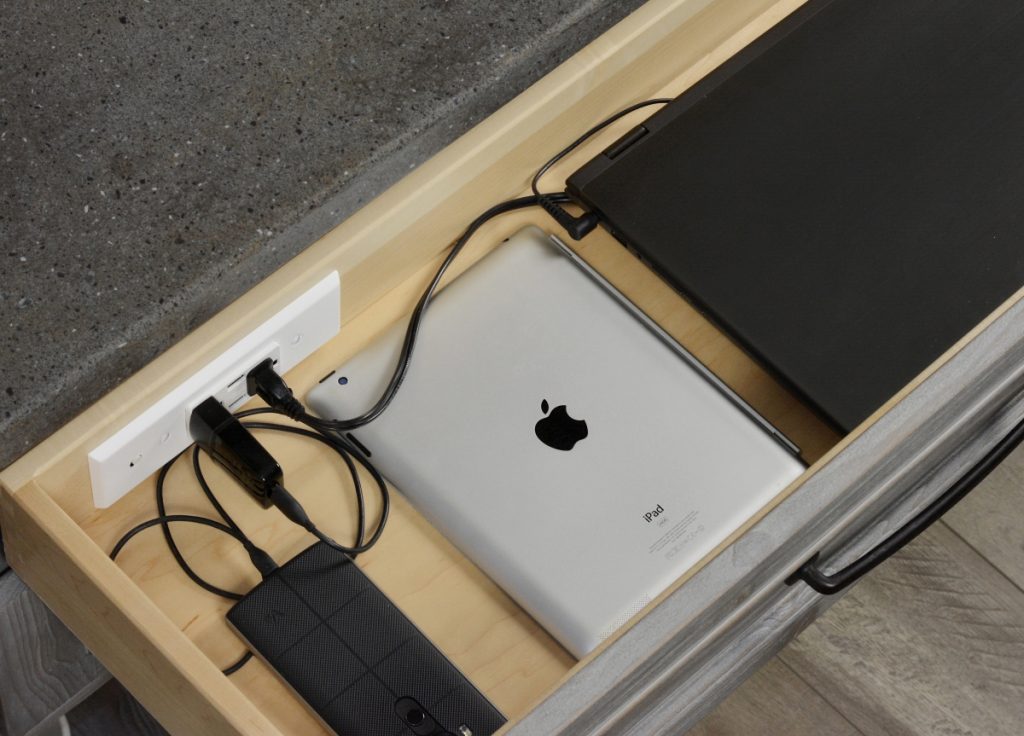
In most homes, everything gravitates toward the kitchen. That includes a tangle of power thirsty phones, laptops, tablets and their associated chargers, even if there are dozens of available outlets elsewhere in the house. Instead of fighting this bizarre byproduct of evolving technology, just go with it.
Designate an area wired to charge all your devices safely inside a drawer or cabinet. That keeps the cord spaghetti off the countertops and out of sight. And since kids are renowned for stealing the kitchen charger for their tablet right at the time yours is dying in the middle of a recipe, make sure there are a couple of extra hard wired USB ports installed in key places.
Touchless Faucets
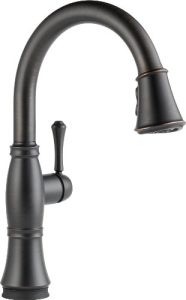
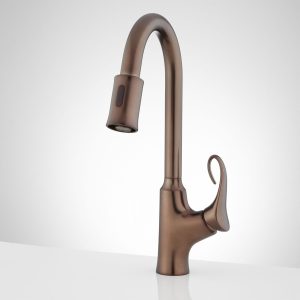
This could be another one of those “Do I really need this?” innovations, but when you’re clutching a hot pot or a bundle of greens, it starts to make perfect sense. Touchless faucets – and those that turn on and off with a tap – got a bad rep when they first hit the market. Some would spontaneously turn on off – especially if installed in metal sinks that conducted accidental brushes.
The technology has improved dramatically. The newer models have automatic shutoffs (which helps if the cat manages to figure out to to turn on the faucet). They are generally considered environmentally friendly because they help you save water while preparing food, shut off automatically and use less water overall.
The prices have come down to the $300 to $800 range and the batteries last from two to five years. Fewer points of contact reduces the chance for spreading bacteria and viruses via the handles – because few of us actually wipe down the handles everytime we use the sink.
Awesome Ovens
While there’s nothing like the classics, ovens keep getting smarter. There are a lot to choose from, but Andersen has chosen a couple of favorites.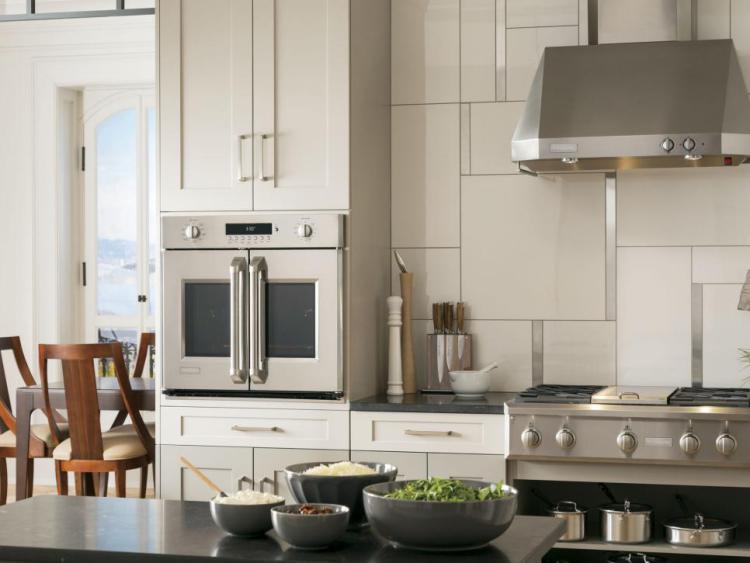
The Monogram French-Door Electronic Convection Wall Oven is a beautiful piece of engineering and an elegant use of space.
“I got to see it in person at GE in Louisville,” Andersen said. “It’s really great.”
The French doors look great and take up half the space of a conventional fold-down door, making it easier to use for shorter people and for those who don’t have a huge corridor between oven and island. A chain-drive mechanism allows you to smoothly open both doors with one hand. You can even control it with your smartphone when you’re stuck in traffic or lounging by the pool. Sticker price is $4,699.
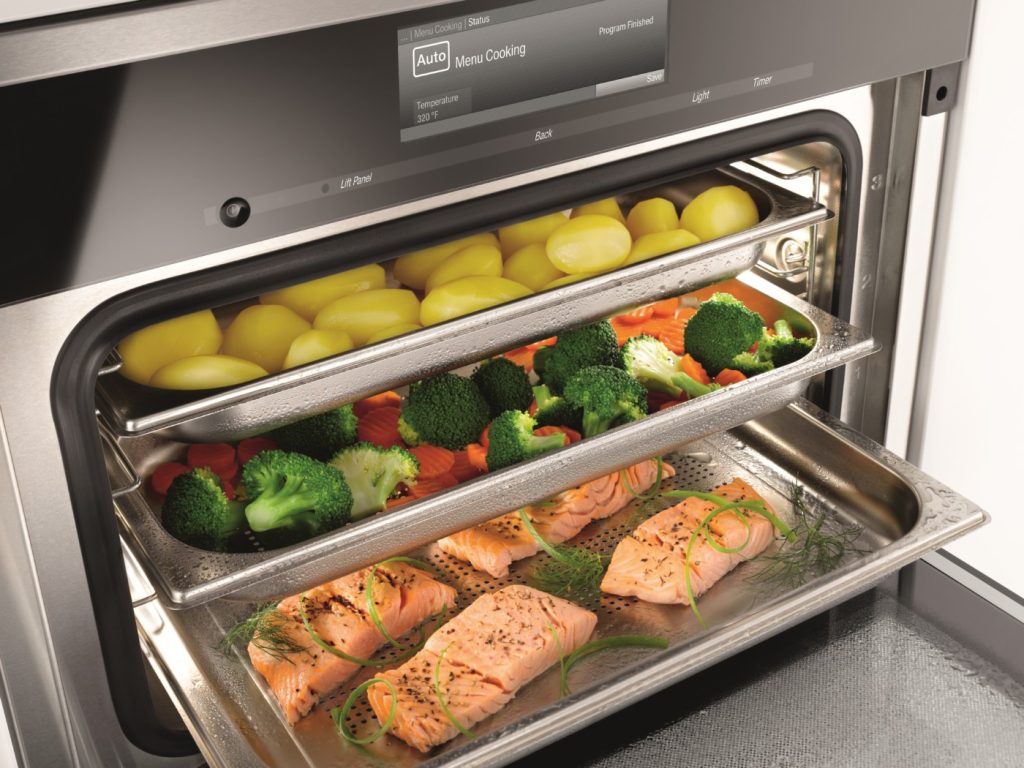
The Miele Combi Steam Oven is a convection and steam oven in one. Steaming is an extremely fast, even method of cooking, requiring less fats. The Combi oven lets you steam food at less than boiling for slow, steady cooking. You can quickly steam a chicken to tender succulence and then broil it a bit to crisp the skin. Steam cooking is a great way to get crispy bread and pizza crusts and you can even steam whole eggs instead of boiling them.
